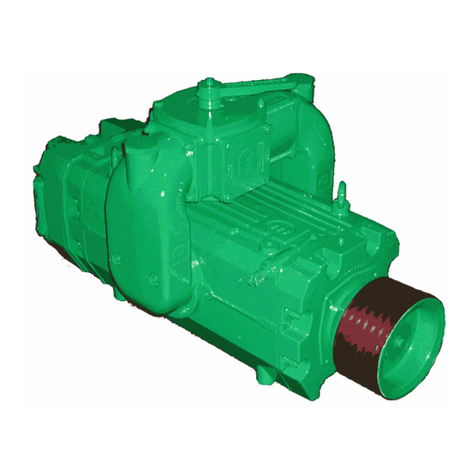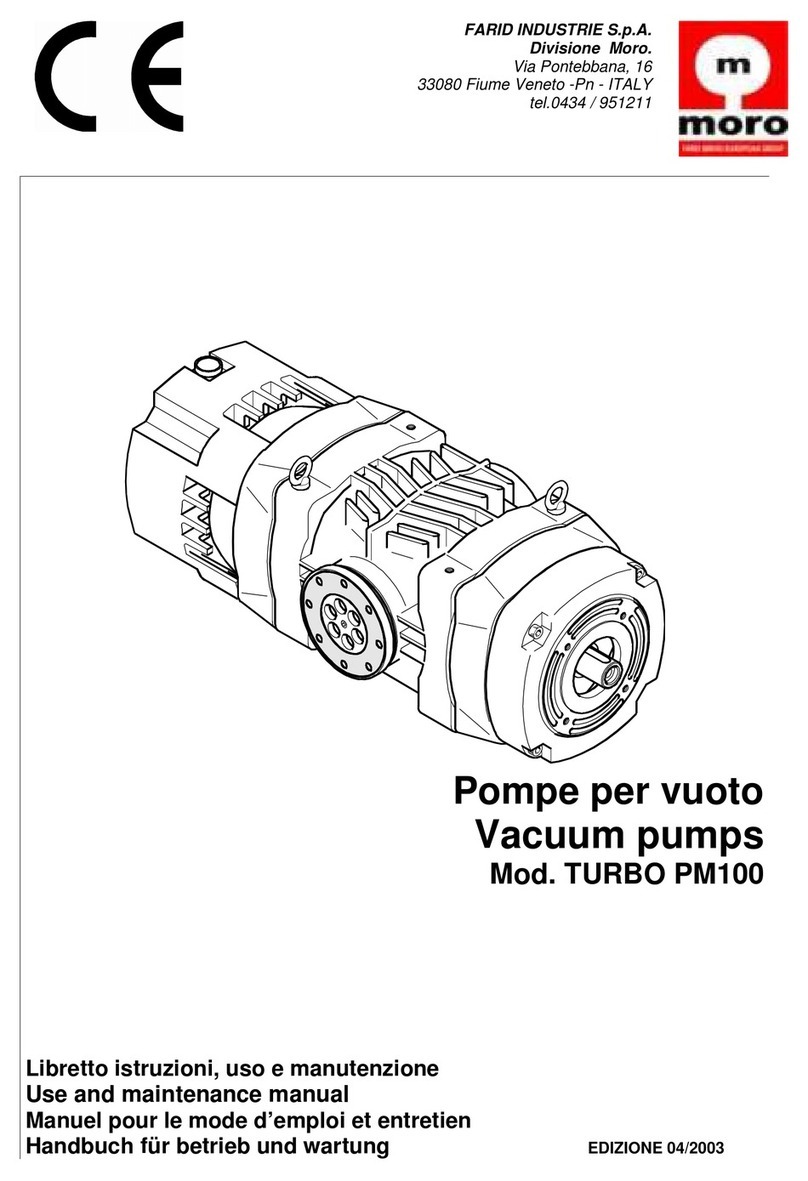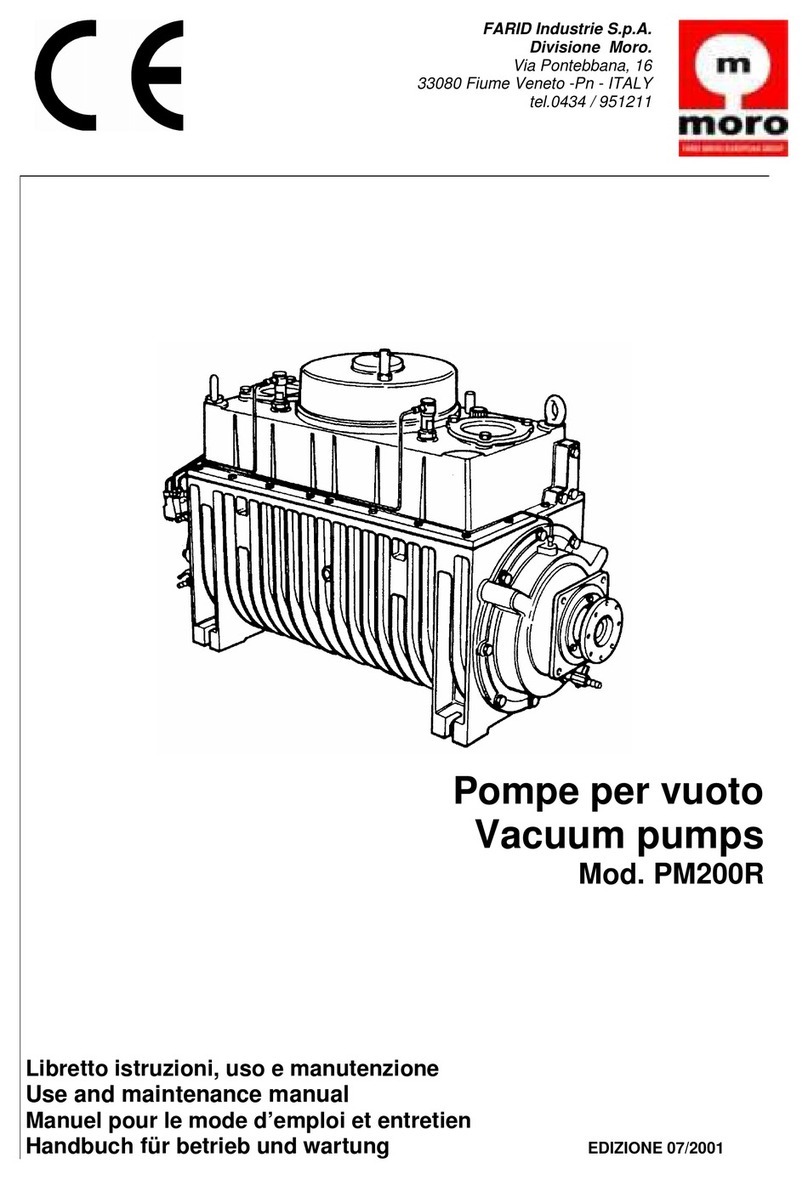
Rev. 00 of 01.01.2009 2 / 29
PREMISE
The vacuum pumps Farid - MORO S.p.A. division - are designed and manufactured in
compliance with EC safety standards and subject to risk evaluation according to standard EN
1050; in particular they comply with directive 98/37/CE and later amendments and integrations.
This manual includes the Declaration of the Manufacturer as per the above directive and all the
indications necessary to the users and manufacturers of equipment to use our products in
safety; thus the manual must always be kept near the vacuum pumps. It is necessary to read
carefully the instructions included in this manual before proceeding with any operation with or
on the vacuum pumps.
This symbol of danger in the manual means that important safety instructions are
given. These are directed to the operator, who is responsible for their respect by
him and as well by other people exposed to the risks related to the use of the
equipment.
The descriptions and illustrations in this manual are solely indicative. The Manufacturer
reserves the right to perform any type of change, at any time.
WARRANTY
When receiving the equipment, verify that all the parts of the vacuum pump are included.
Any anomaly or missing part must be notified within 8 days from receipt. The Supplier
guarantees that the goods sold are exempt from faults and defects and undertakes, only
when such faults are clearly due to the manufacturing process or to the materials used,
to repair or, based on its final assessment, to replace the defective parts. The Buyer
shall be fully charged for labour, travel, transport, and duty expenses (if any). The Seller
is not liable for damage compensation except in case of malice or negligence. The parts
normally subject to wear are not covered by the warranty.
Warranty is void in the following cases:
The defects are due to accidents or evident negligence of the Buyer.
The parts have been modified, repaired or fitted by people not authorized by the
Seller.
Failures and breakages have been caused by unsuitable uses or stresses exceeding
those indicated in the maintenance booklet provided by the seller.
The buyer has not complied with contractual payment obligations. The right to the
warranty of the Buyer is void if the defects are not noticed to the Seller within 8 days
form their discovery, in derogation to the clause 1512 of the Civil Code. The Seller
reserves the right to change or improve its products without being obliged to
change or improve the previously manufactured and/or delivered units. The Seller is
not responsible for incidents or effects of the accidents on persons or goods due to
defects of materials and/or manufacturing.






























